#volcanic lightning
Text
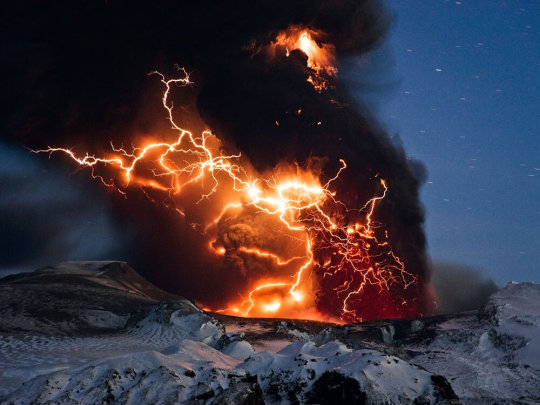
During volcanic eruptions, (above, Iceland's Eyjafjallajokull volcano) colliding particles of ash create immense levels of electricity, released as volcanic lightning.
PHOTOGRAPH BY SIGURDUR STEFNISSON
#sigurdur stefnisson#photographer#national geographic#volcanic eruptions#iceland#eyjafjallajokull volcano#volcano#landscape#volcanic lightning#nature
1K notes
·
View notes
Text
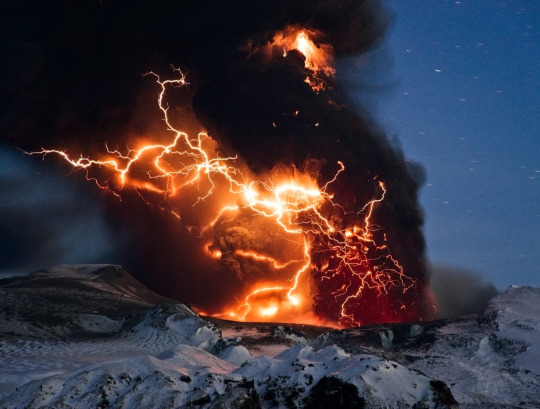
Volcanic lightning during the eruption of Iceland’s Eyjafjallajokull volcano.
18 notes
·
View notes
Text
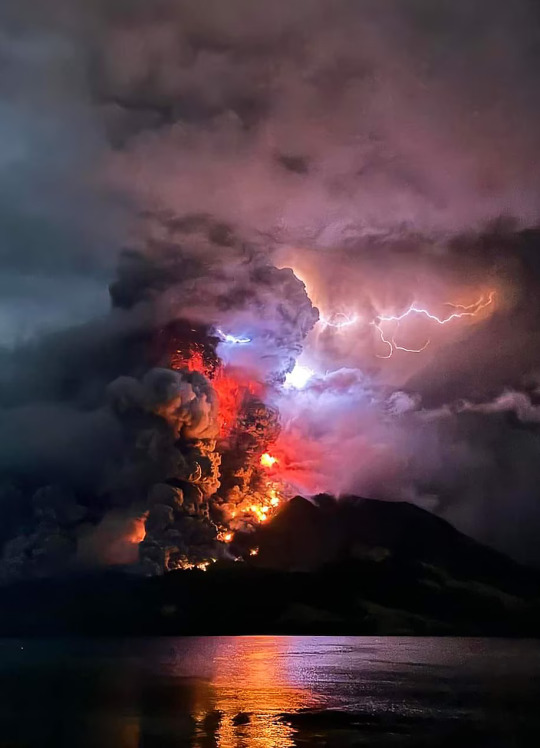
Mount Ruang spews lava and smoke as seen from Sitaro, North Sulawesi, in Indonesia on Wednesday, April 17th. (Source: -/AFP/Getty Images)
youtube
#geology#volcano#eruption#stratovolcano#volcanic lightning#Mount Ruang#Sitaro#North Sulawesi#Indonesia#Youtube
3 notes
·
View notes
Photo

Volcanic lightning captured during Calbuco eruption in 2015 in Southern Chile
49 notes
·
View notes
Text
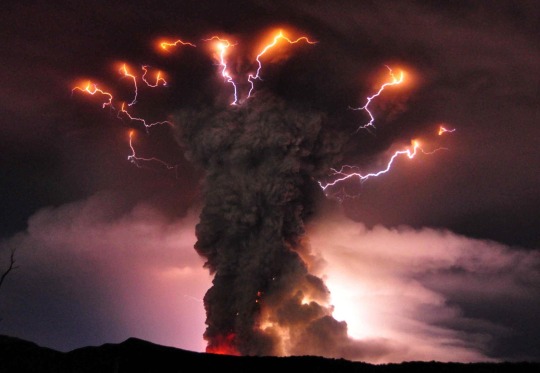
Volcanic lightning
📷 : @Latarnik101 / Twitter
7 notes
·
View notes
Text

Vulcanic Lightning🌋⚡️, Southern Chile🇨🇱
📷 IG: @francisconegroni_fotografia
21 notes
·
View notes
Text


Lightning through the ash cloud of Taal Volcano (x)
#taal volcano#volcano#volcanoes#lightning#ash cloud#volcanic eruption#lightning volt#nature#the philippines#earth#taal lake
2K notes
·
View notes
Text
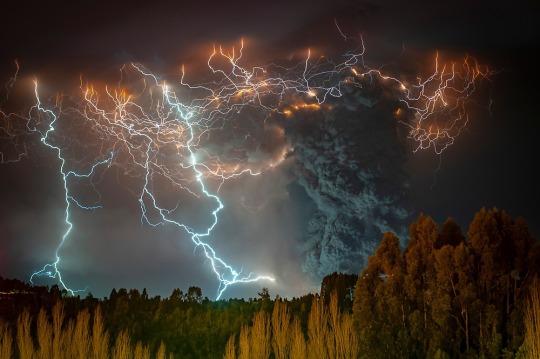
"The End" by Francisco Negroni
48 notes
·
View notes
Text
Breath of the Wild broke the tradition of three elements (fire, water / ice, air / wind) and introduced electricity, which is heavily used in the shrines found in the Gerudo region.
This is interesting because:
Circuits! Aside from the Sheikah Slate gyro shrines, the Gerudo region puzzles are the most technologically advanced in BotW Hyrule.
Real-life sandstorms generate static electricity that can discharge in arcs that look like localized lightning.
That phenomenon is likely inspiration for Vah Naboris’ sandstorms and lightning strikes.
Urbosa also has an affinity for summoning and controlling magical lightning.
The Thunder Helm is a Gerudo treasure passed down through the generations that protects the wearer from lightning strikes.
Ganondorf used to wear a bunch of topaz, which BotW also established protects the wearer from lightning.
This leads to several headcanons:
Electricity is a hazard in Hyrule’s deserts and specialized protective equipment was developed to protect people from it.
Gerudo leaders have an affinity for magic.
Ganondorf used to wield electricity (as seen in OoT death tennis).
Urbosa inherited that magical capability—and is arguably more skilled with the element.
Then there is the alignment portion. Din is often associated with fire, Nayru with water / ice, and Farore (loosely) with air / nature.
So where would lightning align? Well, what is a shorthand term for electricity / energy? “Power.”
#legend of zelda#breath of the wild#ocarina of time#ganondorf#urbosa#gerudo#my mental imagery of Din is the personification of volcanic lightning
469 notes
·
View notes
Text

The Forbidden Reach needs you!
Commission work
#world of warcraft#warcraft#warcraft art#warcraft oc#commission#dracthyr#forbidden reach#volcanic lightning baby#angais#glowcrow
34 notes
·
View notes
Text
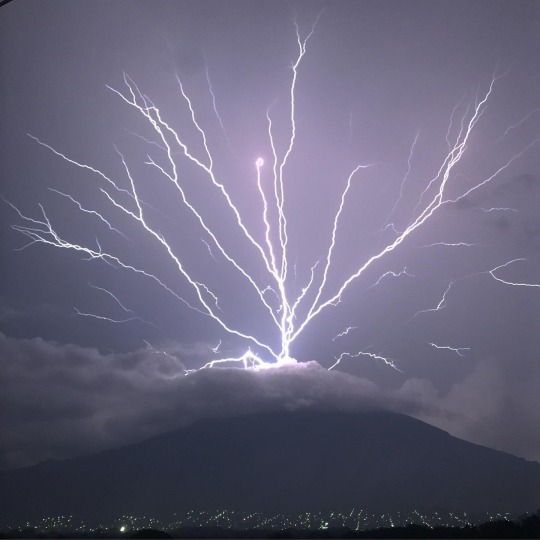
UPWARD LIGHTNING AT VOLCAN DE AGUA (WATER VALCANO), 2019.
IMAGE BY ALYSSA BARRUNDIA.
#ASTÉTICAS#ASTETICAS#VOLCANO#VOLCANOS#VOLCAN#WATER VOLCANO#VOLCAN DE AGUA#2019#GUATEMALA#NATURE#LIGHTNING#ERRUPTION#IMAGE#NATIONAL GEOGRAPHIC#NAT GEO#PHENOMENON
14 notes
·
View notes
Photo


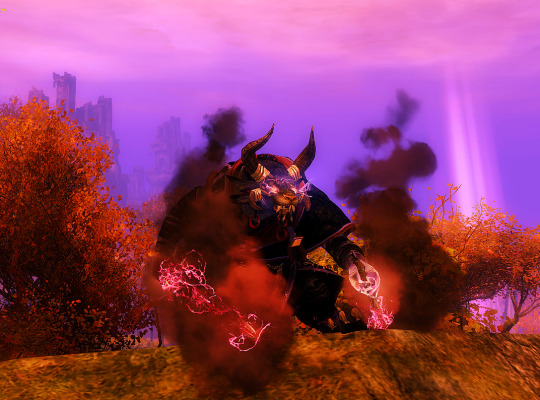
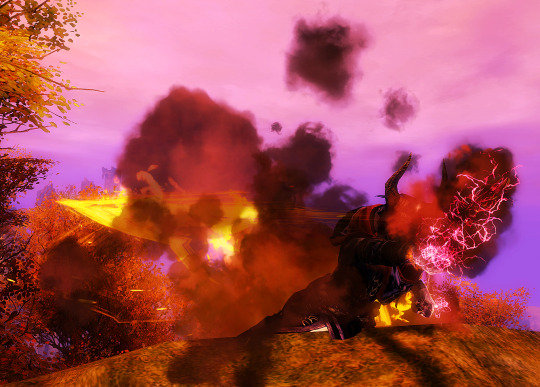

"Searing flesh from bone!"
somehow I always manage to change how my characters look in some way after I show them off on here lmao
Drusilla got a small update to her colour palette, and was swapped to Weaver! She was my first Weaver, actually, and was always supposed to have a big focus on combining Fire+Air magics, so I decided I wanted to be true to that original vision.
So here she is, rocking her proper volcanic storm aesthetic!
#Guild Wars 2#gw2#charr#gw2 fan submission#OC: Drusilla#that last screenshot is of her using the fire+air combo attack and it looks SO COOL#the volcanic stormcaller weapons are also like. anet made weapons Specifically For Drusilla#it's the EXACT right volcanic lightning theme that she's supposed to have!#also please look up volcanic lightning storms. they're SO COOL LOOKING
29 notes
·
View notes
Text
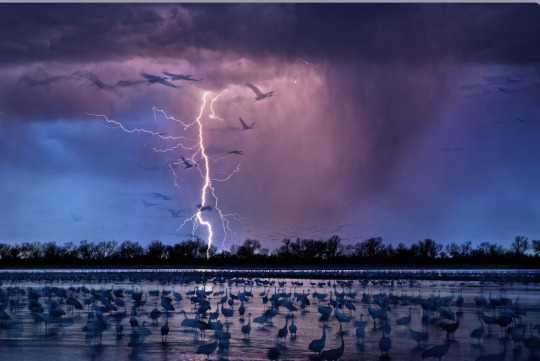
Randy Olson
Tonga’s volcanic eruption on January 15, 2022, triggered a staggering 2,600 lighting flashes a minute (National Geographic, June 28, 2023)
The Kingdom of Tonga is a group of Polynesian islands.
0 notes
Text
out of context screenshots from my colosseum au fic











#unordinary#my posts#isen unordinary#rei unordinry#valerie unordinary#volcan unordinary#mama lightning#arlo unordinary#perci rambles#perci content
25 notes
·
View notes
Text
youtube
Tonga’s Hunga eruption produced the most intense lightning ever recorded
The eruption produced 2,600 flashes per minute at peak intensity. Scientists used the lightning to peer into the ash cloud, teasing out new details of the eruption’s timeline
The January 15, 2022, eruption of Hunga Volcano in Tonga continues to break records. According to a new study, the eruption created a “supercharged” thunderstorm that produced the most intense lightning ever recorded. There were nearly 200,000 lightning flashes in the volcanic plume throughout the eruption, peaking at more than 2,600 flashes every minute, the researchers found.
When the submarine volcano erupted in the southern Pacific Ocean, it generated a plume of ash, water and magmatic gas at least 58 kilometers (36 miles) high. The towering plume gave scientists useful information about the scale of the eruption, but it also obscured the vent from satellite view, making it more difficult to track changes in the eruption as it progressed.
High-resolution lightning data from four separate sources — never previously used all together — have now let scientists peer into that plume, teasing out new phases of the eruption’s life cycle and gaining insights into the weird weather it created.
“This eruption triggered a supercharged thunderstorm, the likes of which we’ve never seen,” said Alexa Van Eaton, a volcanologist at the United States Geological Survey who led the study. “These findings demonstrate a new tool we have to monitor volcanoes at the speed of light and help the USGS’s role to inform ash hazard advisories to aircraft.”
The study was published in Geophysical Research Letters, which publishes high-impact, short-format reports with immediate implications spanning all Earth and space sciences.
The storm developed because the highly energetic expulsion of magma happened to blast through the shallow ocean, Van Eaton said. Molten rock vaporized the seawater, which rose up into the plume and eventually formed electrifying collisions between volcanic ash, supercooled water and hailstones. The perfect storm for lightning.
Combining data from sensors that measure light and radio waves, the scientists tracked lightning flashes and estimated their heights. The eruption produced just over 192,000 flashes (made up of nearly 500,000 electrical pulses), peaking at 2,615 flashes per minute. Some of this lightning reached unprecedented altitudes in Earth’s atmosphere, between 20 to 30 kilometers (12 to 19 miles) high.
“With this eruption, we discovered that volcanic plumes can create the conditions for lightning far beyond the realm of meteorological thunderstorms we’ve previously observed,” Van Eaton said. “It turns out, volcanic eruptions can create more extreme lightning than any other kind of storm on Earth.”
The lightning provided insight into not only the duration of the eruption, but also its behavior over time.
“The eruption lasted much longer than the hour or two initially observed,” Van Eaton said. “The January 15 activity created volcanic plumes for at least 11 hours. It was really only from looking at the lightning data that we were able to pull that out.”
The researchers saw four distinct phases of eruptive activity, defined by plume heights and lightning rates as they waxed and waned. The insights gained from linking lightning intensity to eruptive activity can provide better monitoring and nowcasting of aviation-related hazards during a large volcanic eruption, including ash cloud development and movement, Van Eaton said. It’s a significant challenge to get reliable information about volcanic plumes at the beginning of an eruption, especially for remote, submarine volcanoes. Harnessing all the long-range observations available, including lightning, improves early detection to keep aircraft and people out of harm’s way.
“It wasn’t just the lightning intensity that drew us in,” Van Eaton said. She and her colleagues were also puzzled by the concentric rings of lightning, centered on the volcano, that expanded and contracted over time. “The scale of these lightning rings blew our minds. We’ve never seen anything like that before, there’s nothing comparable in meteorological storms. Single lightning rings have been observed, but not multiples, and they’re tiny by comparison.”
Intense, high-altitude turbulence was again responsible. The plume injected so much mass into the upper atmosphere that it sent out ripples in the volcanic cloud, like dropping pebbles in a pond. The lightning appeared to ‘surf’ these waves and move outward as 250-kilometer-wide rings.
As if all that weren’t enough to make this eruption fascinating, it represents a style of volcanism known as phreatoplinian, which occurs when a large volume of magma erupts through water. Previously, this eruption style was only known from the geological record and had never been observed with modern instrumentation. The Hunga eruption changed all that.
“It was like unearthing a dinosaur and seeing it walk around on four legs,” Van Eaton said. “Sort of takes your breath away.”
#science#space#astronomy#physics#news#meteorology#geology#volcanism#tonga volcanic eruption#lightning#Youtube
2 notes
·
View notes
Text
Volcanic lightning occurs when colliding particles of volcanic ash generate massive amounts of static electricity, seen here in spectacular footage of a Krakatoa eruption (Indonesia) in 2018 captured by photographer Martin Rietze.
Source: @ wonderofscience on Twitter
Full version below:
https://youtu.be/NGcbNn4Vk1w
34 notes
·
View notes